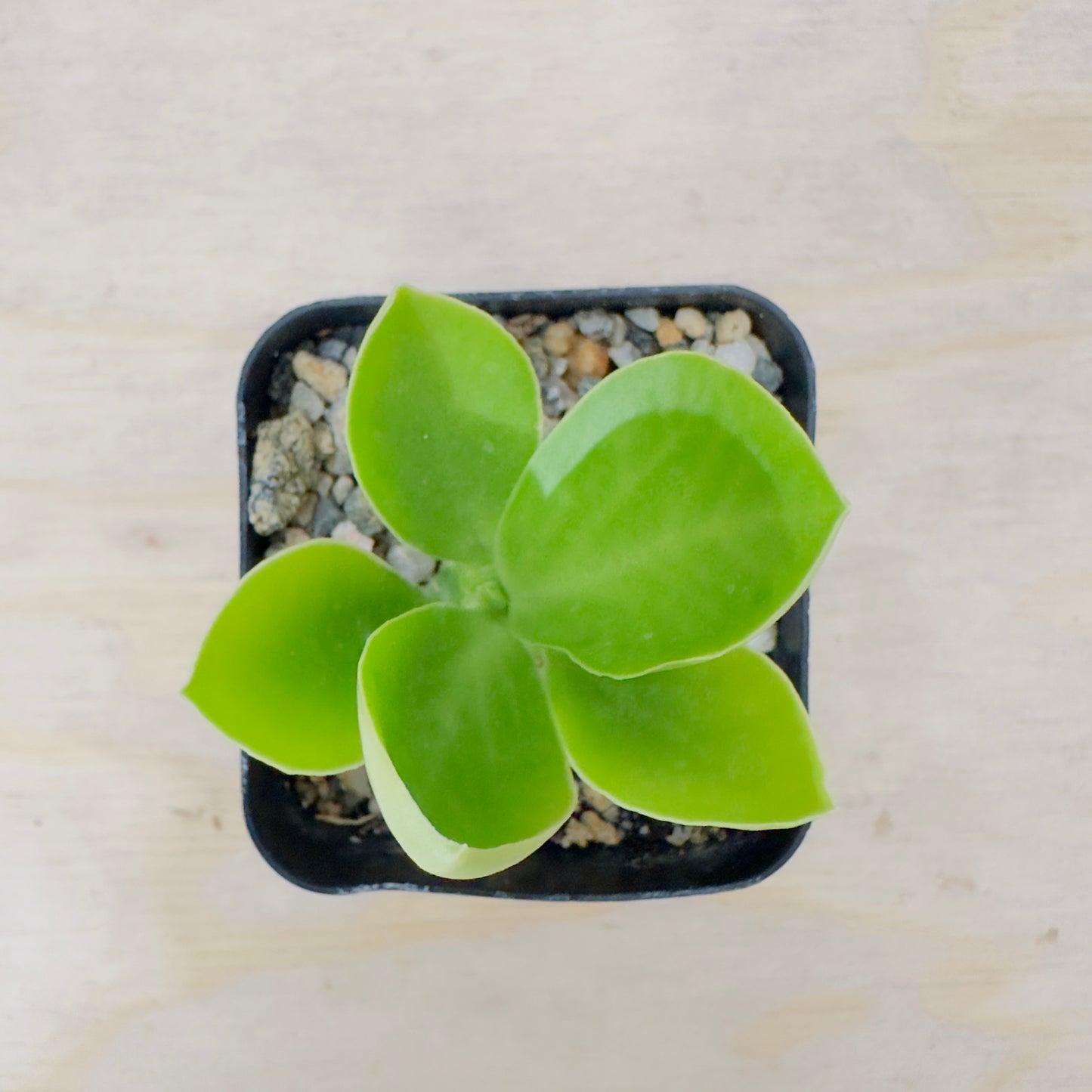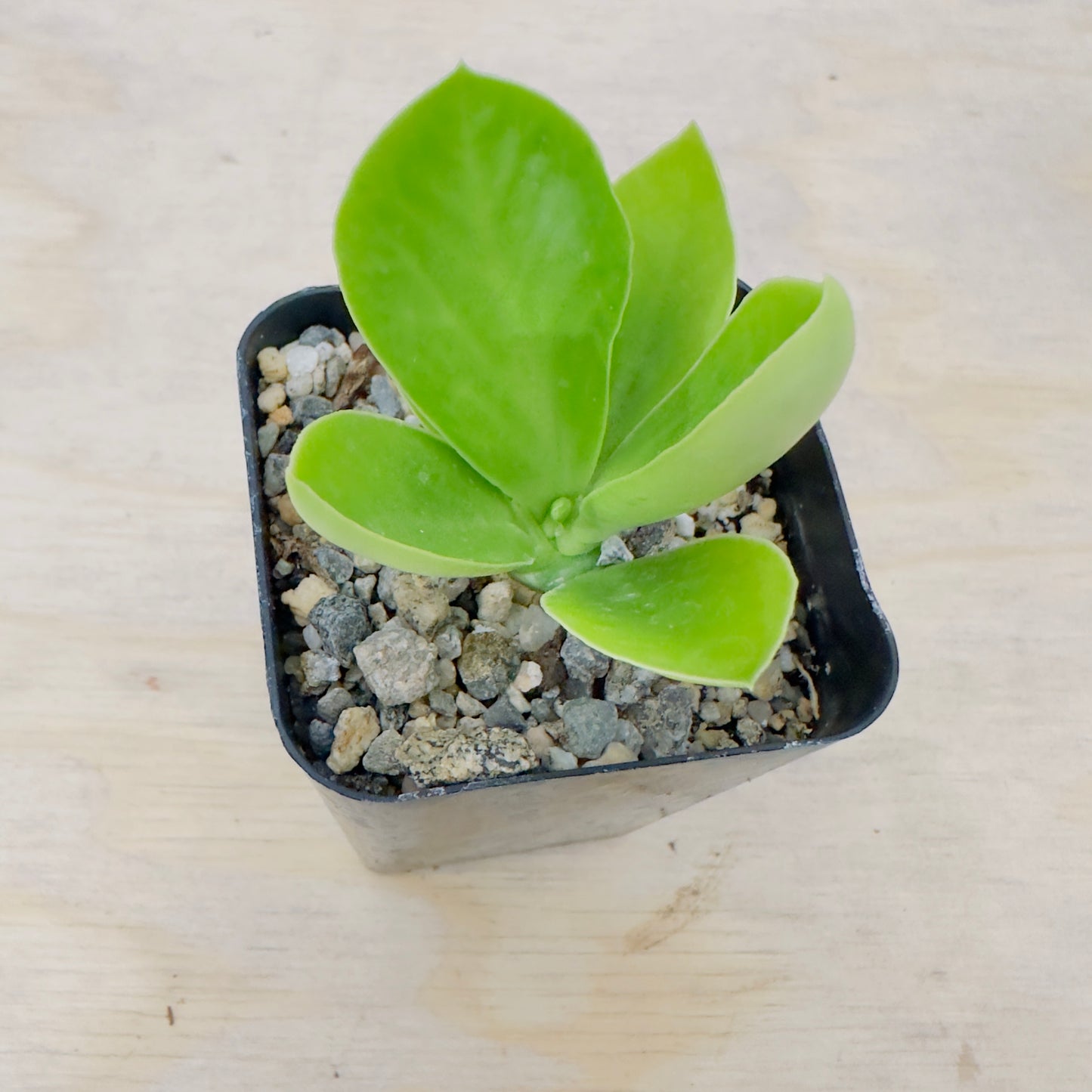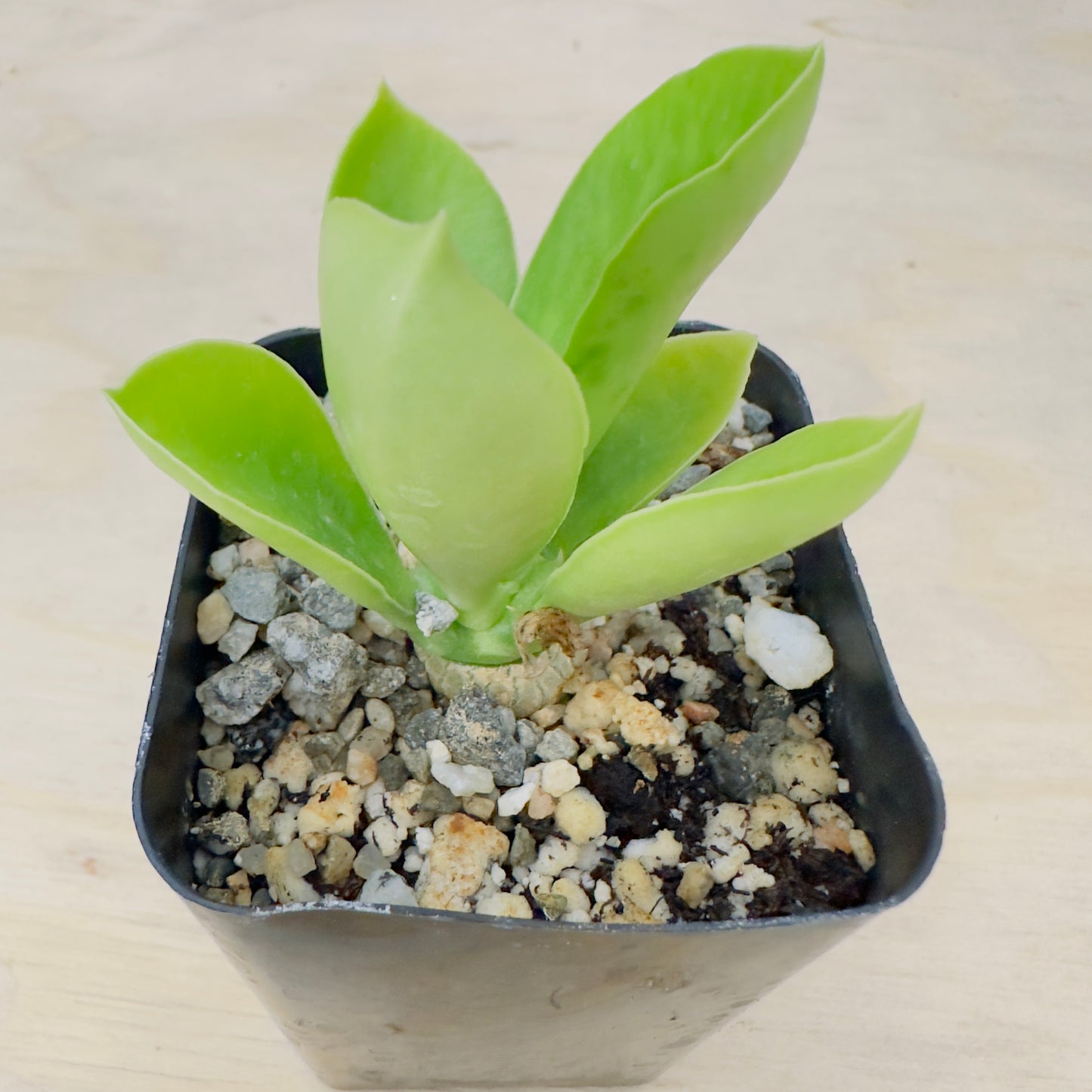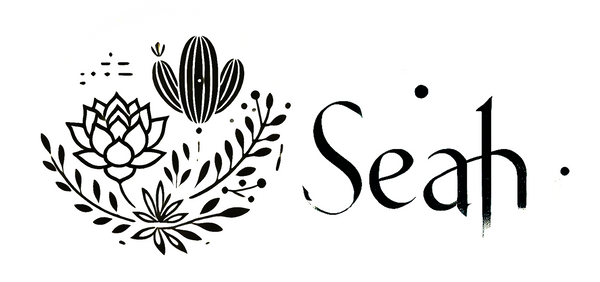Euphorbia poissonii - Poison Spurge
Euphorbia poissonii - Poison Spurge
In stock
Couldn't load pickup availability
📝 Description
Morphological Characteristics
Euphorbia poissonii is a highly toxic, shrubby succulent known for its upright growth and sharp spines. It typically grows up to 1–2 meters (3–6 feet) tall, forming thick, columnar stems that branch sparingly. The stems are ribbed with prominent spine shields along the edges, bearing reddish to brown spines.
The skin is gray-green with a waxy surface that helps reduce water loss in its native arid habitat. During the growing season, small, yellowish-green cyathia (Euphorbia flowers) emerge at the stem tips, often accompanied by reddish bracts.
Growth Habits
This plant grows slowly and prefers dry, warm conditions. It remains upright and compact, making it suitable for large containers or dryland gardens in frost-free climates. In native regions, it’s also used as a living fence due to its defensive properties.
Maintenance Points
• Lighting: Requires full sun to partial shade. Strong light enhances growth and spine coloration.
• Watering: Drought-tolerant. Water thoroughly only when soil is fully dry. Avoid watering in cold months.
• Soil: Needs very well-draining mix—cactus soil amended with sand or perlite.
• Temperature: Thrives in 20–35°C (68–95°F). Not frost-hardy—protect from temperatures below 10°C (50°F).
• Fertilization: Light feeding with diluted succulent fertilizer during active growth (spring/summer).
• Handling: Use extreme caution. The milky latex sap is highly toxic and irritant—wear gloves and eye protection when repotting or trimming.
• Pests: Usually pest-resistant. Keep dry to avoid root rot or fungal infections.
Display & Use
Euphorbia poissonii is ideal for collectors of rare, unusual, or defensive plants. Its architectural form makes it a striking focal point in xeriscapes or desert-themed container arrangements. Best used where pets and children cannot reach, due to its highly caustic latex.
🌿 Care Tips
Plant Care
Light
Water
Soil
Temperature
🌟 Note: It’s normal for succulents to appear slightly shriveled after shipping. They usually recover within a few days in a suitable environment.
📦 Shipping Info
Seah Shipping Policy
Effective Date: November 2025
This Shipping Policy applies to orders delivered within the continental United States (the lower 48 states). By purchasing from Seah, you agree to the terms below.
1) Shipping Cost & Free Shipping
- Automatic rate calculation: Shipping is calculated at checkout based on weight, destination ZIP and carrier rates.
- Free Standard Shipping: Orders $59+ (pre-tax, after discounts) ship free to the lower 48 states.
- Alaska, Hawaii, Puerto Rico & other territories: Not eligible for free shipping or standard flat offers at this time.
- Taxes/Duties: Applicable sales tax and any fees are shown at checkout.
2) Processing Schedule
- Business days only: We process and ship Monday–Friday. No shipping on weekends or U.S. federal holidays.
- Handling time: 1–3 business days after payment confirmation.
- Cut-off time: Orders placed before 3:00 PM (PST) are prioritized for same-day processing; others roll to the next business day.
- Changes/Cancellations: Email support@seah.co within 12 hours of purchase; after that, the order may already be in processing.
3) Transit Times
| Method | Estimated Transit | Total ETA (Handling + Transit) |
|---|---|---|
| Standard | 5–8 business days | 6–11 business days |
| Express | 3–4 business days | 4–7 business days |
ETAs are estimates. Weather, holidays, carrier delays or high-volume periods may extend delivery times.
4) Seasonal Temperature & Plant Safety
- Winter (Nov–Mar): We strongly recommend adding a heat pack at checkout to protect plants from freezing. Orders shipped without a heat pack during cold conditions are not covered for cold damage.
- Summer heat: During extreme heat waves, we may hold shipments until temperatures normalize. We’ll notify you if there’s a hold.
- Packaging: Plants are carefully packed (bare-root or potted by type/size) to minimize transit stress.
5) Carriers & Tracking
- We ship via USPS / UPS / FedEx, selected automatically for best service to your address.
- When your order ships, you’ll receive a tracking email. Tracking typically activates within 24 hours.
- If you haven’t received tracking within 3 business days, contact us at support@seah.co or +1 (626)-999-1314.
6) Address Changes & Delivery Issues
- Before shipment: Request address changes within 12 hours of ordering.
- After shipment: We can’t modify the address once dispatched. Please contact the carrier for redirection options.
- PO Boxes: Supported for USPS only; UPS/FedEx require a street address.
- Seah isn’t responsible for delays or loss due to incorrect addresses provided at checkout.
7) Service Area
We currently ship to the continental U.S. (lower 48 states). Orders to AK/HI/PR and other territories are not eligible for free shipping and may be restricted.
8) Support
- Hours: Mon–Fri, 9:00 AM – 5:00 PM (PST)
- Phone: +1 (626)-999-1314
- Email: support@seah.co
- Address: 7870 Margaux Pl, Rancho Cucamonga, CA 91739, United States
Thank you for supporting our California nursery—each plant is hand-selected and packed with care. 🌱






